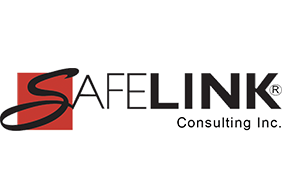Transportation accidents are the number one cause of workplace fatalities in the United States. Data from the National Center for Health Statistics, an arm of the CDC, estimates that there were nearly 40,000 motor vehicle fatalities in 2016. If these estimates are correct, then it would be the highest number of motor vehicle fatalities since 2007. Employees who drive for work should be made aware of the risks that go along with distracted driving and the safe work practices that they can use to protect themselves and others while on the road.
Distracted Driving
Distractions have joined alcohol and speeding as the three main contributing factors in fatality or serious injury crashes. Many distractions exist while driving, but cell phones are a top distraction because so many drivers use them for long periods of time each day. Some examples of cell phone use include talking, texting, and using navigational apps. A driver simply talking on the phone is at four times the risk of a crash than a normal driver. Hands-free devices are often seen as a solution to the risks of driver distraction because they help eliminate two obvious risks – visual, looking away from the road and manual, removing your hands from the steering wheel. However, a third type of distraction can occur when using cell phones while driving – cognitive, taking your mind off the road. Research has shown that hands-free devices offer no safety benefit when driving and that hands-free devices do not eliminate cognitive distraction. Anything that interrupts the driver’s concentration is potentially unsafe, that includes changing a CD, changing the radio station, eating, drinking, and carrying on a conversation with a passenger.
Get help in developing your health and safety program.
Safe Driving Practices for Employees
As of July 2018 talking on a hand-held cellphone while driving is banned in 16 states and the District of Columbia. Learn more here.
SafeLink recommends employers institute a Cell Phone policy which would include at least the following rules:
- Abstain from talking on a cell phone while you are actively driving.
- If you need to answer a call or make one, try and pull off the road into a safe parking area.
- Hands-free or not, postpone conversations until you have parked the vehicle.
- Do not send a text message, IM or try and read incoming messages while driving.
- Use your cell phone only in the event of an emergency in which you need help or someone else needs help.
- When using a navigation application, preview your route so that you know what to expect before you begin driving.
- Never operate a cell phone camera or video recorder while driving.
A Cell Phone Policy is a great tool for employers to use to help ensure their workers safety. Training is an essential element of any safety policy or program. All drivers should be trained on their employer’s cell phone policy. Employees should be trained on the hazards they face on the road and the safe work practices they can use to avoid driving accidents.
Do you have workers that drive for your business? Whether employees drive daily or periodically for your business, they must take a Driver Safety Training course to assist in meeting OSHA training requirements. Get online driver training here for employees:
Employee Driver Safety Training - General Industry online course
Employee - Charting a Course for Safety Success Dental Lab Driver Training
Employer Training - The Overlooked Risk: Dental Lab Pickup and Delivery Workers.
Driver Safety Training
Employees who operate a motor vehicle are at the greatest risk for a work-related fatality. SafeLink's 30-minute course will assist employers with meeting OSHA training requirements. The presenter will discuss:
- risks associated with operating a motor vehicle,
- common causes of driving accidents,
- how to prevent driving accidents,
- handling emergency situations,
- hazard communication (chemical exposure)
- infection control precautions
This course will benefit employees who operate motor vehicles as well as employers who need to meet OSHA training requirements as a part of their new hire and annual workplace safety training.
Learn more about what SafeLink Consulting can do to help your business with compliance services, including safety compliance, to meet OSHA training requirements and quality system consulting to meet FDA compliance. SafeLink Consulting assists businesses with workplace safety training, infection control training, HIPAA training online, quality systems, assessments, audits, due diligence, and more.
Industries include:
Dentistry compliance - assisting the dental practice with meeting requirements for OSHA, HIPAA, EPA, and CDC guidelines, patient safety and employee health & safety
Dental Laboratory compliance - assisting the dental lab with meeting requirements for OSHA, FDA, and CDC guidelines, employee health & safety, plus FDA requirements for lab manufacturing custom implant abutment /gmp for medical device manufacturers
Medical Device Manufacturers compliance - assisting with meeting OSHA compliance & FDA requirements, GMP - good manufacturing practices
General Industry compliance - assisting with OSHA compliance and FDA compliance as it pertains to the specific business
Beverage Industry compliance - assisting beverage businesses such as the craft brewery, winery, cidery, distillery, vintner with meeting OSHA compliance, health & safety, FDA requirements / GMP - Good Manufacturing Practices.








Leave Comment